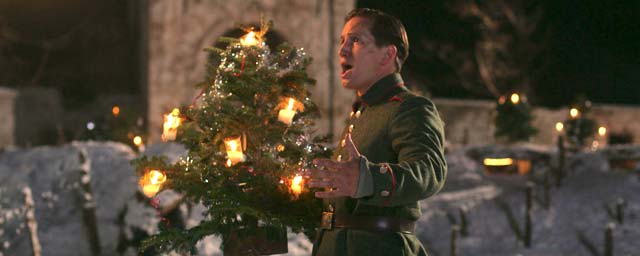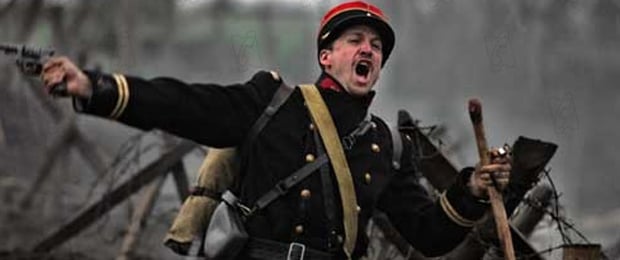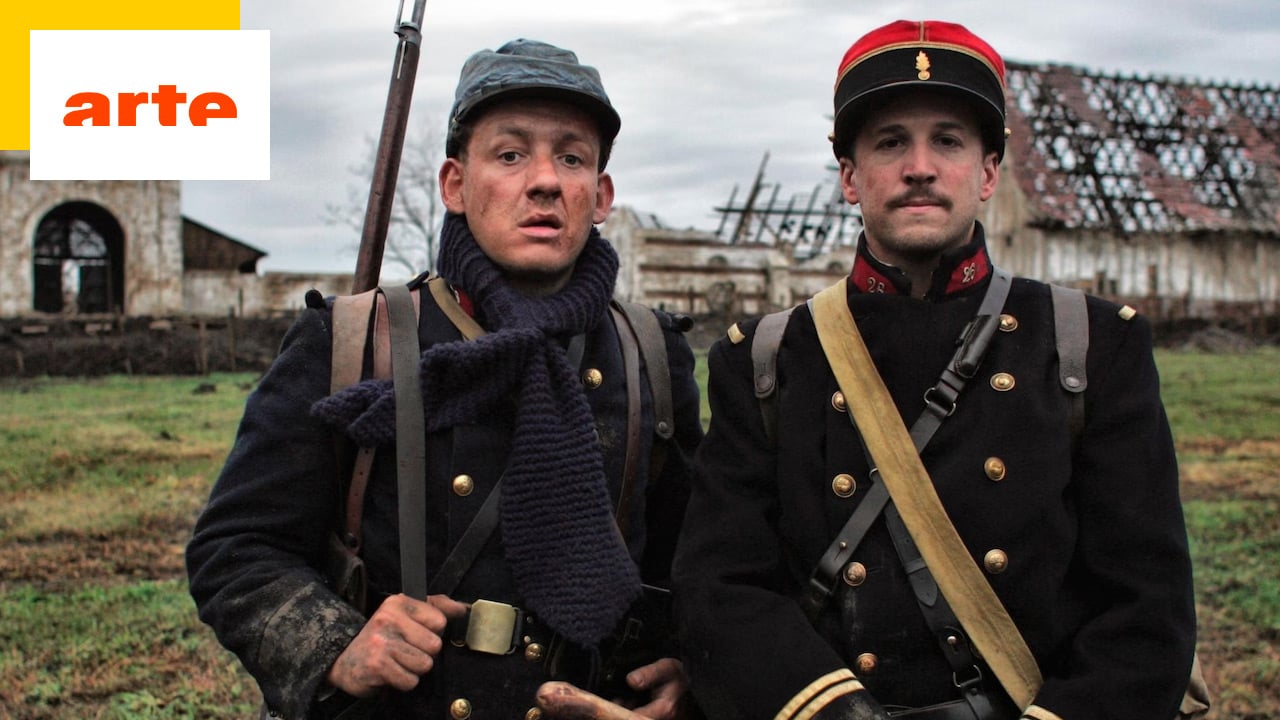A poignant historical fresco, served by a fine international cast, “Merry Christmas” tells an authentic story of fraternization, which occurred on Christmas Day 1914. A moving but short-lived interlude, in the middle of a terrible war.
When the war broke out in the depths of the summer of 1914, it surprised and swept away millions of men in its whirlwind. Nikolaus Sprink, prodigious tenor at the Berlin Opera, will have to give up his great career and especially the one he loves: Anna Sörensen, soprano and singing partner. Anglican priest Palmer volunteers to follow Jonathan, his young helper to the church. They leave their Scotland, one as a soldier, the other as a stretcher bearer. Lieutenant Audebert had to leave his pregnant and bedridden wife to go fight the enemy.
But since then, the Germans have occupied the small northern town where the young wife has probably given birth by now. And then Christmas arrives, with its snow and its procession of gifts from families and staffs. But the surprise will not come from the generous packages which litter the French, Scottish and German trenches…
As surprising as it may seem, Merry Christmas is inspired by a true story that took place during the First World War at several locations on the front during Christmas 1914. By reading the book by Yves BuffetautBattles of Flanders and Artois 1914-1918director Christian Carion discovers a passage entitled “The Incredible Christmas of 1914” in which the author evokes fraternization between enemies.
Upset by such a discovery, the apprentice filmmaker spoke about it to producer Christophe Rossignon. The latter found the subject magnificent, but aware of its scope, he already suggested that Christian Carion learn his skills by shooting a few short films. After the success of his first feature, A Swallow Made Spring, the producer then encouraged him to tackle what would become Merry Christmas.
Northwest Movies
In 2002, Christian Carion began writing the screenplay. His first job was to document the fraternizations, to recover all possible information to find out concretely what had happened.
“I have unearthed a series of extraordinary news items in the British archives, many of them, and later the French and German ones. Suffice to say that one does not get into them easily. These are places mainly frequented by professional historians. Grace to Yves Buffetaut, I was able to access these documents.
In France, they are guarded by the army which, although it cannot prevent consultation, does not publicize them. As for the German archives, I had no trouble consulting them since many are kept in France, it is the consequence of the Second World War” explains the director.
The Christmas Truce
The Great War broke out in the summer of 1914 and everyone thought that the fighting would only last a few months. The unprepared – or poorly – prepared men are sent to the front and after several weeks of marches, the soldiers find themselves immobilized in trenches, living facing their enemy.
The latter then put a face, a voice, a first name on the soldiers of the opposing camp… And during breaks, fraternization sometimes takes place. Although prohibited and punishable by death, these “breaks” took place in several places and were strongly repressed by the military authorities.

JC Lother
The fraternization recounted by Christian Carion in his film is inspired by what took place in the trenches surrounding the city of Ypres in Belgium. Events immortalized today by a cross located at the Ploegsteert memorial.
On the morning of December 25, 1914, French and British soldiers heard Christmas carols coming from enemy trenches and discovered fir trees along the German lines (sent by Kaiser Wilhelm II who believed that “ even in times of war, we must not lose our values “).
The two camps then come out and find themselves on the No man’s land. German tenor Walter Kirchhoff (played by Benno Fürmann in the film) performs Christmas carols for “enemy” soldiers. The men exchange gifts, eat together, chat, take photos and even play soccer. At the end of the match, they bury their dead on the battlefield.

Northwest Movies
Although most of the photos taken during this famous Christmas truce were destroyed or confiscated, a few were saved and published by the Daily Mirror in January 1915.
Considered a mutiny by the General Staff, these fraternizations above all show the refusal of these young men – who left for a short war – of a bloody and endless conflict. To prevent these events from repeating themselves in the following years, the General Staff ordered artillery fire every Christmas night.
